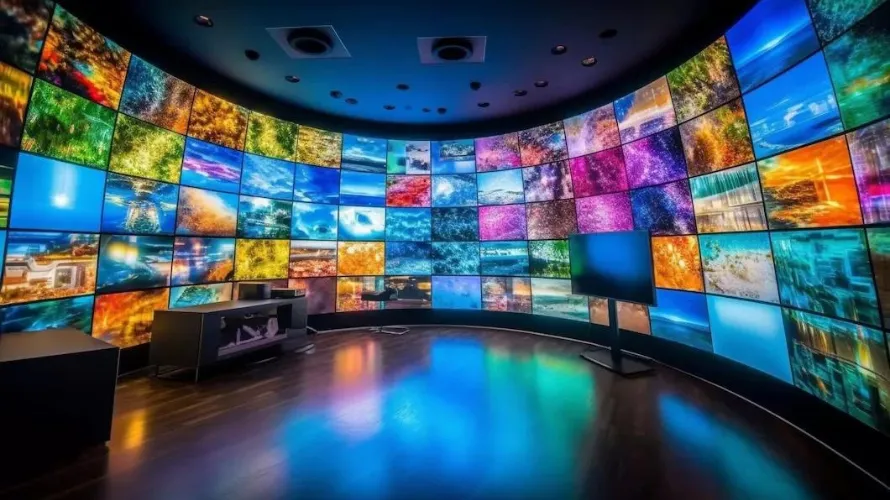When it comes to creating large and impactful visual displays, two popular options often come to mind: LED screens and video walls. While both can be highly effective in various settings, understanding their differences and specific advantages is essential for making the right choice.
What is an LED Screen?
An LED screen is a display that uses light-emitting diodes (LEDs) to produce images. These screens are known for their brightness, energy efficiency, and ability to produce vibrant colors. LED screens can be used in various applications, including indoor and outdoor advertising, digital signage, and large-scale event displays.
What is a Video Wall?
A video wall consists of multiple display units, such as LCD panels, LED panels, or projection screens, arranged to create a single, larger screen. The individual units are tiled together to form a cohesive display, often managed by a video wall controller that ensures the content is displayed seamlessly across the entire surface.
Key Differences Between LED Screens and Video Walls
1. Technology and Construction:
– LED Screens: Typically consist of a single, unified display panel using LED technology.
– Video Walls: Comprised of multiple display units that can be LCD, LED, or projection-based, forming a larger composite image.
2. Seamlessness:
– LED Screens: Provide a seamless display with no visible gaps or bezels, ensuring a smooth and uninterrupted visual experience.
– Video Walls: Depending on the technology used, may have visible bezels or seams between the individual display units, which can disrupt the visual flow.
3. Brightness and Visibility:
– LED Screens: Known for high brightness levels, making them suitable for outdoor use and areas with high ambient light.
– Video Walls: While modern LCD and LED video walls offer good brightness, they may not match the intensity of dedicated LED screens, especially in outdoor environments.
4. Resolution and Clarity:
– LED Screens: Offer high resolution and clarity, particularly when using fine pixel pitch technology.
– Video Walls: The resolution depends on the individual units used. High-resolution LCD panels can provide excellent clarity, but the overall resolution is affected by the number and arrangement of panels.
5. Installation and Maintenance:
– LED Screens: Generally easier to install as a single unit, with less complexity in alignment and calibration.
– Video Walls: Require precise alignment and calibration of multiple units, which can be more complex and time-consuming. Maintenance may also involve dealing with individual panels.
6. Cost:
– LED Screens: Can be more expensive upfront, particularly for large, high-resolution installations.
– Video Walls: May offer a more cost-effective solution initially, especially when using LCD panels, but the total cost can increase with the complexity of installation and maintenance.
Choosing the Right Option
– Consider the Environment: For outdoor applications or environments with high ambient light, LED screens are generally the better choice due to their superior brightness and durability. For indoor applications, both LED screens and video walls can be suitable, depending on the specific requirements.
– Assess the Visual Needs: If seamless display and high resolution are critical, LED screens may be preferable. For applications where the presence of bezels is acceptable, such as control rooms or corporate settings, video walls can be effective.
– Evaluate Budget Constraints: LED screens can be more costly, so budget considerations may lead to choosing video walls, especially when high-end LCD panels can provide the necessary resolution and brightness at a lower cost.
– Installation and Maintenance: Consider the ease of installation and maintenance. LED screens offer simplicity in both areas, whereas video walls may require more effort in alignment and ongoing maintenance of individual units.
Conclusion
Both LED screens and video walls have their unique advantages and potential drawbacks. Understanding the specific needs of your application, whether it’s brightness, resolution, budget, or maintenance, will guide you in making the best choice. LED screens are ideal for seamless, high-brightness displays, especially outdoors, while video walls offer flexibility and can be a more economical solution for large indoor displays.



